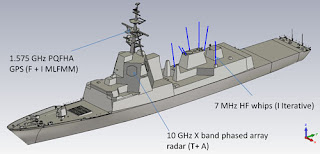Last week I enjoyed 3 days in Barcelona, but it wasn't all Gaudi and Catalan cuisine. I was there to attend EPE 2009 which was held in the Palau de Congressos / Fira de Barcelona close to the Placa d'Espanya, one of the city's biggest squares.
This year's "European Conference on Power Electronics and Applications" attracted more than 1000 engineers and scientists, and over 750 contributions were presented in lecture and dialogue sessions. A wide range of power electronics applications were covered, including measurement and control, electrical machines, and transimission and distribution of electrical energy. EPE also hosted a technic

3D EM Simulation of a resistance spot welding gun
al exhibition which gave its visitors a great opportunitiy to see the latest innovations of over 40 leading companies, as well as to make some new contacts with people focused on power electronics.
Our booth was pretty popular. We had visitors interested in the simulation of transformers, electrical machines as well as in sensors and actuators. I've got to admit that I really enjoyed "showing off" with how fast the setup of a transient electromagnetic simulation could be done in CST EM STUDIO® (CST EMS). Let's see if any of the evaluation copies I was asked for get turned into long-term licenses.
On the second day of the conference I had been invited to present CST EMS in a vendor session. The schedule wasn't exactly advantageous, as I had been placed between the poster sessions in the afternoon and the Gala dinner in the evening. Now Barcelona is a glamerous city, so most people were preparing for the Gala dinner in their hotels. This meant my session didn't attract as many attendees as I would have liked, but I do hope that those who did attend, found it interesting. I feel strongly that conference organisers need take all scheduling conflicts into consideration before organising similar sessions, preferably moving them closer to the main scientific presentations. During my session I demonstrated which kind of low frequency applications we've solved in CST EMS so far, highlighted the user-friendy interface and our solver technologies, including what's coming in the next release. If you couldn't attend but would like a copy of my presentation, please feel free to send me an e-mail to "frank (dot) weiand (at) cst (dot) com".
The next conference on Power Electronics will be the EPE-PEMC 2010 in Ohrid, Macedonia, in September 2010. Looking forward to meeting you there!
Frank
PS If you are interested in learning more, you can find worked examples of static and
low frequency applications on our website.





